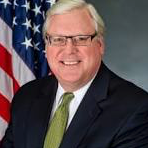
Our latest letter reinforces what Senate Republicans have been warning since Albany Democrats enacted the “Climate Leadership and Community Protection Act” in 2019: the goals and timelines set forth in this ongoing strategy of clean energy mandates ignore affordability, feasibility, and reliability. Remember that these mandates call for electric vehicles, electric school buses, electric buildings, the repeal of the “100-foot rule,” and a Cap-and-Invest program that clearly risks overloading New York’s electric grid.
“The economic toll of the CLCPA implementation is becoming untenable,” our letter states. “A conservative estimate places the total cost of the law’s implementation at $340 billion. Electricity rates in New York are now 48% higher than the national average and 35% higher than in neighboring Pennsylvania. Alarmingly, nearly 20% of a typical utility bill now consists of government-imposed charges, a figure likely to rise further (because of the Abany Democrats’ CLCPA). These realities point to a (CLCPA) transition plan that is not only unsustainable but one that risks creating an economic and energy disaster. We believe a pause is essential - one that allows for reassessment, thoughtful adjustment, and a renewed commitment to an energy policy that balances environmental responsibility with reliability and affordability.”
We are calling on the governor to convene a comprehensive review process on the CLCPA, one that includes what should have been a guidepost from the start: a comprehensive, straightforward, transparent cost-benefit analysis. There’s no time to wait. It has become increasingly clear that the current goals and timelines set forth in CLCPA cannot be met, a reality that even the governor now admits.
“We cannot accomplish what those (CLCPA) objectives were back in before I became governor in a time frame that’s not going to hurt ratepayers. So, we’re slowing things down,” the governor said recently.
The head of the New York State Energy and Research Development Authority (NYSERDA) added, “It is a change. But it’s an important one because of what we are going for – a reliable grid. And we need to look at that in a clear-eyed manner as to how to achieve it.”
Many of us could not agree more. Approaching this challenge in a “clear-eyed manner” is long overdue. It’s what we’ve been calling for time and again over the past six years. The key now will be not to wait. NYSERDA plans on issuing a new draft energy plan this summer and seek public comment on it throughout the fall. It’s a critical back-to-the-drawing-board moment on the CLCPA and one that must lead to stopping the implementation of mandates that can only do more harm, like the just-announced request from New York State Electric and Gas to the state Public Service Commission to impose an unconscionable 48% delivery rate hike on its ratepayers.
Until we begin, in earnest, a straightforward reassessment of the realities of the current CLCPA strategy, these mandates will keep delivering devastating price tags and consequences for ratepayers and taxpayers, businesses and industries, school districts, farmers, and entire local communities and economies. We must immediately refocus on affordability, feasibility, and reliability.
Senate Republicans have long put forth commonsense alternatives to delay the CLCPA mandates while providing relief to ratepayers, addressing the reliability of the grid, and, especially now, ensuring a diverse energy portfolio that will keep energy options affordable and accessible for the long term.
“We further advocate for an “all-of-the-above” energy policy that does not rely solely on wind and solar but also embraces dependable energy sources,” we wrote last week to the governor. “We encourage your administration to continue to push forward with nuclear energy development but let the private sector take the lead. At the same time, we respectfully ask you to reconsider your administration’s stance toward natural gas, a critical and dependable energy source for millions of New Yorkers. Natural gas must remain part of our diverse and resilient energy mix. This is a pivotal moment for our state’s energy future. We urge you to act now to protect the stability of our energy grid and the economic well-being of all New Yorkers.”
Stay tuned.
Senator Tom O'Mara represents New York's 58th District which covers all of Chemung, Schuyler, Seneca, Steuben, Tioga and Yates counties, and a portion of Allegany County.
- Read more...
- 1 comment
- 42 views

